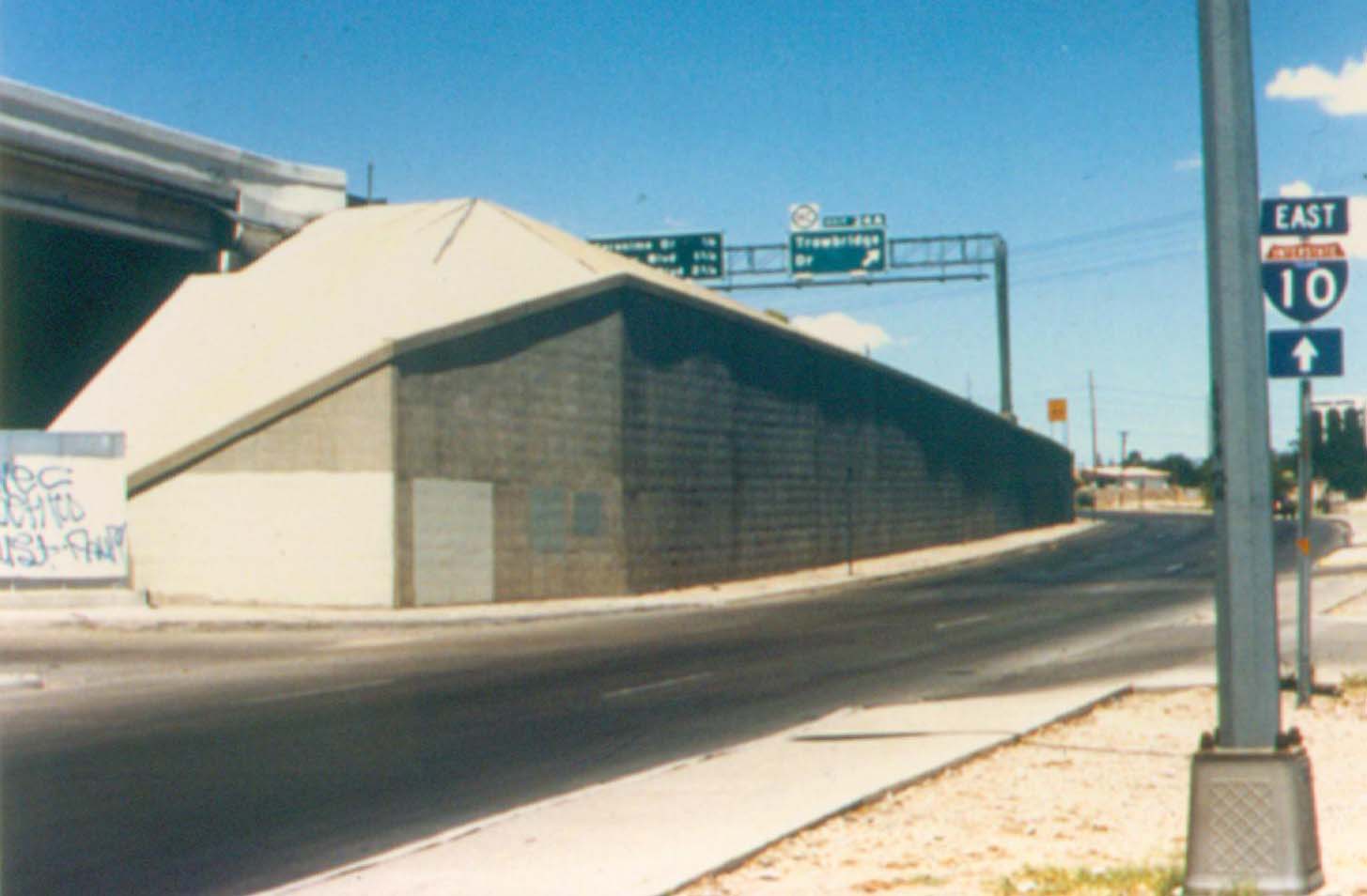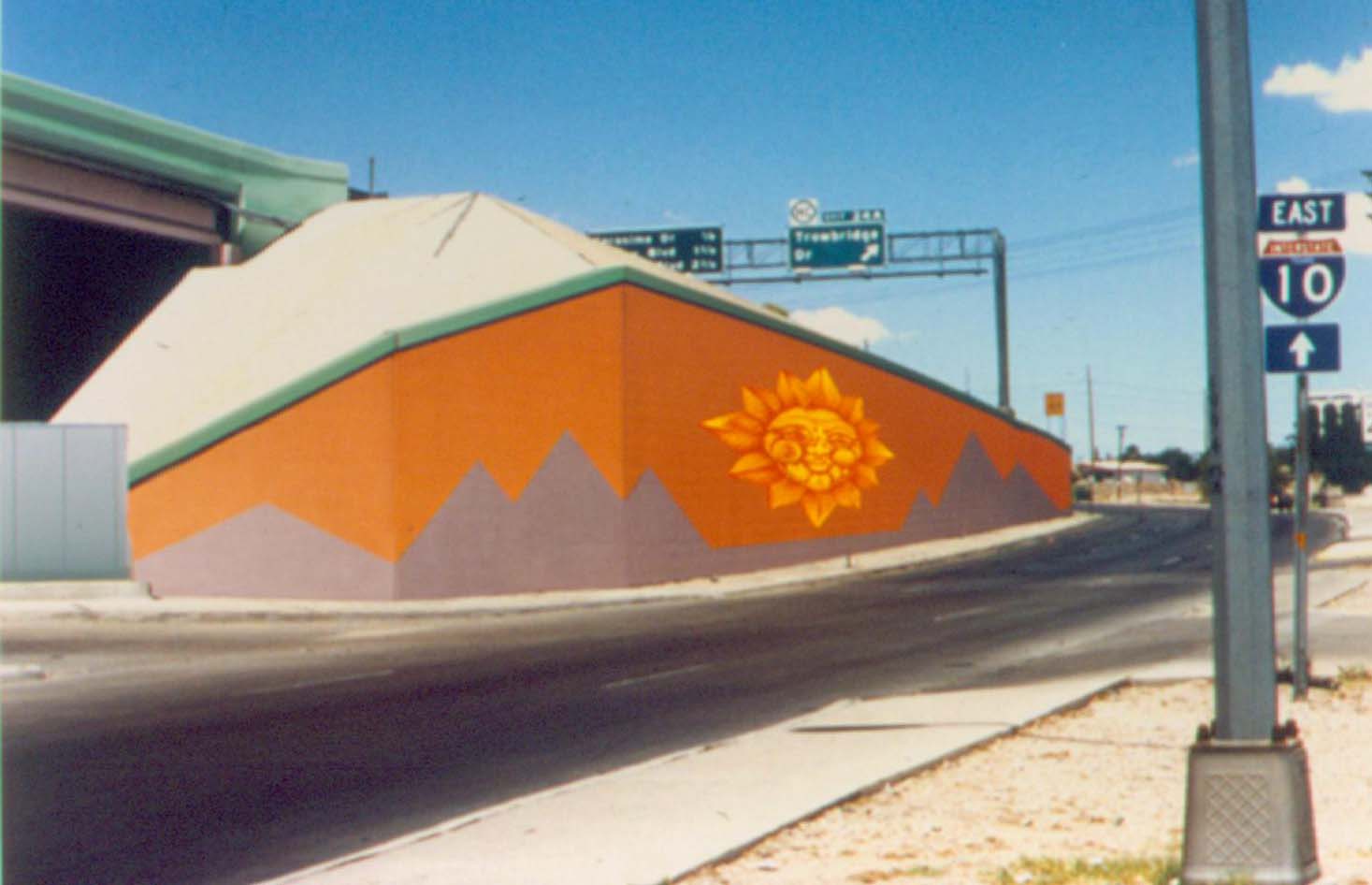Section 11: Public Art
Anchor: #i1011816Overview
Urban centers may have an active interest in acquiring or placing public art on the right-of-way (see Figures 4-73 and 4-74). Some examples of TxDOT accommodation of public art projects are the murals in El Paso and Dallas and the Sam Houston statue in Huntsville. The primary concern is that public art projects meet the environmental demands of the roadside and the minimum requirements governing safety, access, and management of the highway.
Figure 4-72. Public art may occupy otherwise unused areas of the roadway. See Figure 4-73 for a public art project implemented in the space shown in this photo.
Figure 4-73. Public art projects can be a viable way to allow residents to express their sense of community in creative ways.
Projects that are a joint effort with city officials and volunteer arts have the best chance of success (see Figures 4-75 and 4-76). The following subsections outline design considerations in evaluating public art projects proposed for state rights-of-way.
Figure 4-74. Drab concrete surfaces set a somber tone and often invite graffiti.
Figure 4-75. Experience shows that appropriate themes can enhance a corridor and discourage graffiti vandalism.
Anchor: #i1011877Safety
- Anchor: #VITCRPKU
- If public access is allowed to the artwork, all ADA requirements must be met. Anchor: #VPOYOWKO
- Reflective surface finishes should be avoided to minimize visibility hazard to highway users.
Finishes
- Anchor: #JDCNKKBK
- Durable, all weather finishes are essential. Finishes should be evaluated for their reflectivity, ability to resist pollutants associated with highway environments, and weathering characteristics. Anchor: #KMMUALQB
- Finishes should be used that will allow repair if the structure or art piece is damaged. Anchor: #FPUPUDPP
- Finishes should be selected that allow the removal of graffiti.
Location
- Anchor: #JARVMRNF
- Unless proper facilities are provided, the placement of artwork should not invite viewers to stop or access the piece on foot. Anchor: #RBSOMESV
- All setbacks and sight triangle requirements must be met based on the type of highway.
Vandalism
- Anchor: #NFXXVVAI
- Sites that are subject to vandalism should be avoided. Anchor: #MHETSFYO
- Night lighting should be provided to discourage vandalism and highlight the artwork.
Theme
- Anchor: #OVILMIBV
- Symbols, motifs, or colors must be sensitive to cultural issues. Anchor: #VTIFNYXW
- Review all art pieces to be sure that they do not consciously or unconsciously include gang or high school colors, logos, symbols, or images that could be racially or ethnically biased.
Complexity
- Anchor: #QMHXGKKA
- Artwork placed on the right-of-way should be simple. Complex pieces can distract drivers or will not be understood or appreciated. Anchor: #PMRPAURG
- Avoid placing artwork in locations where there are important driver orientation signs.

